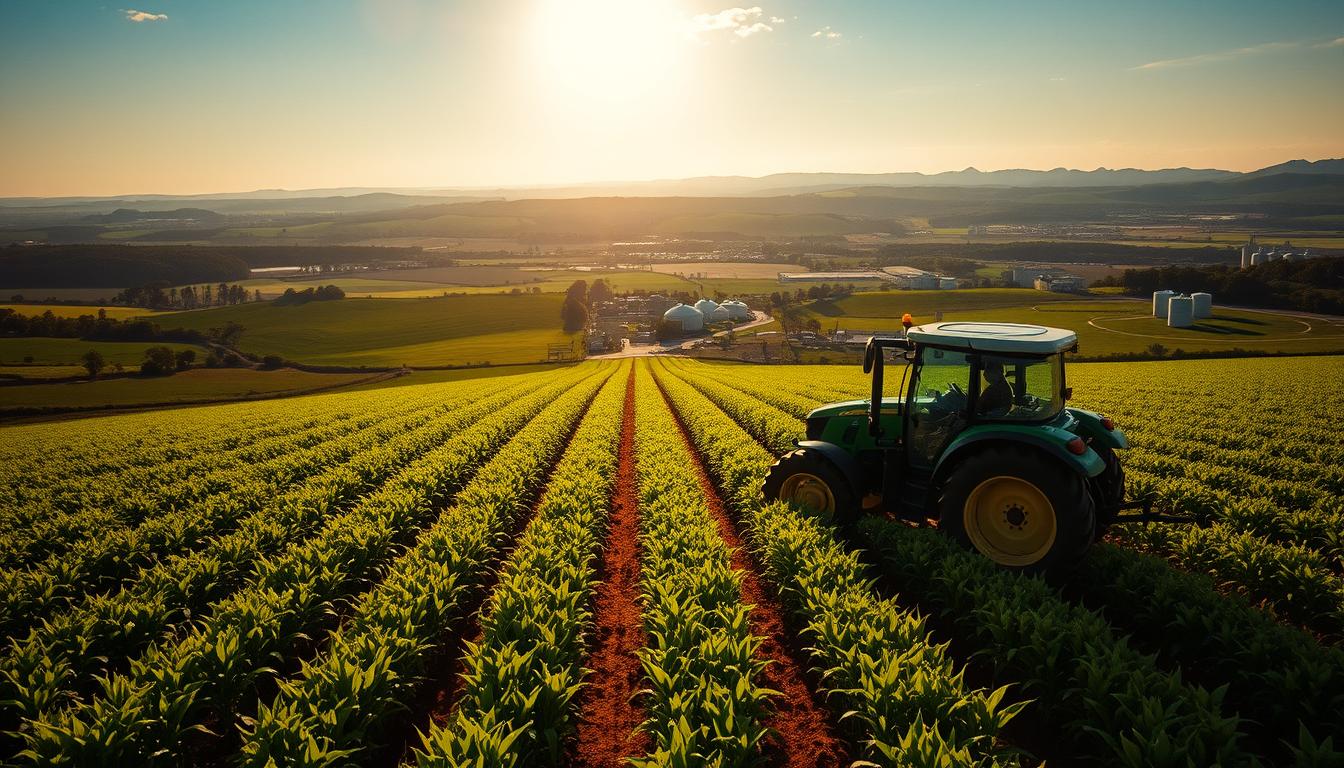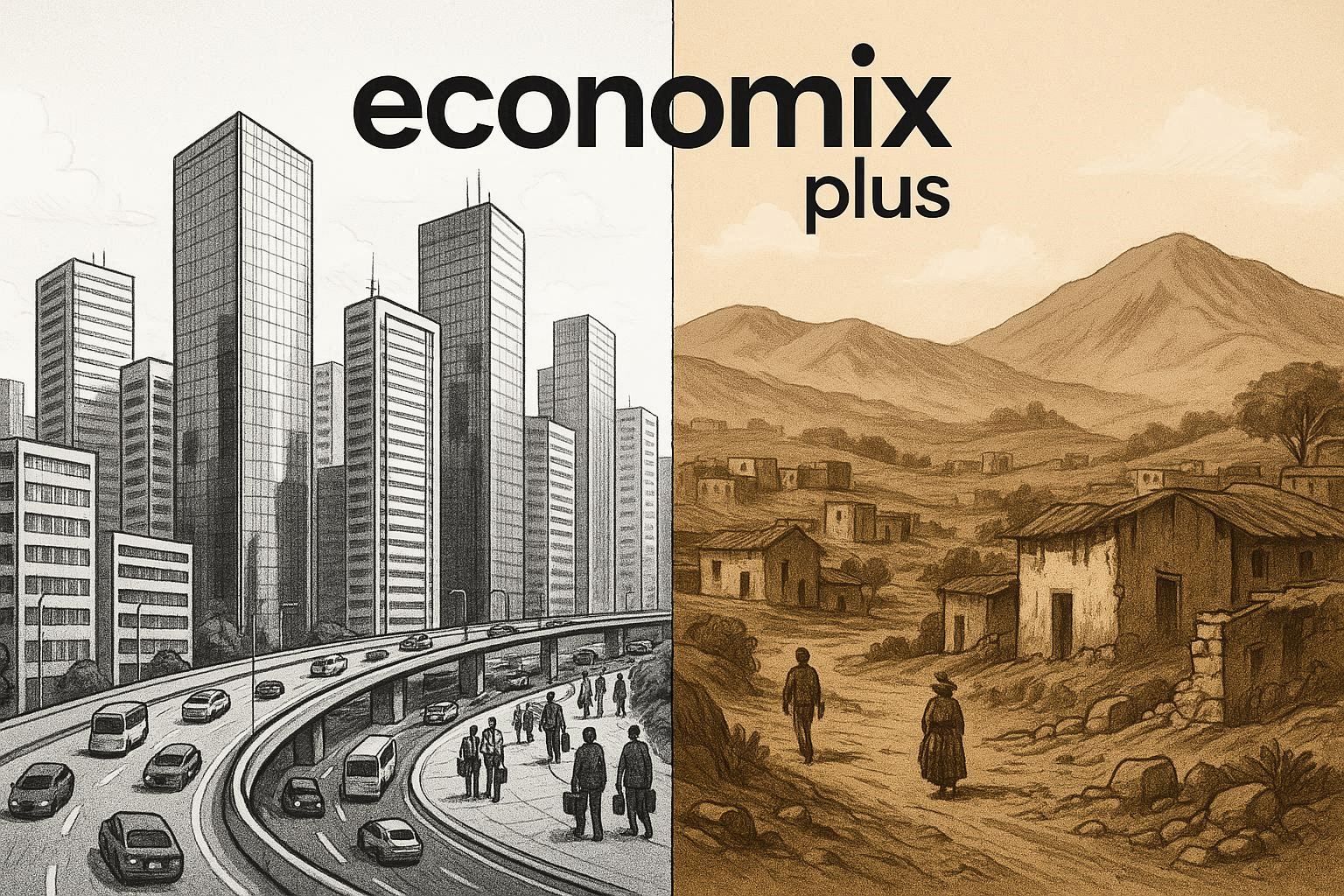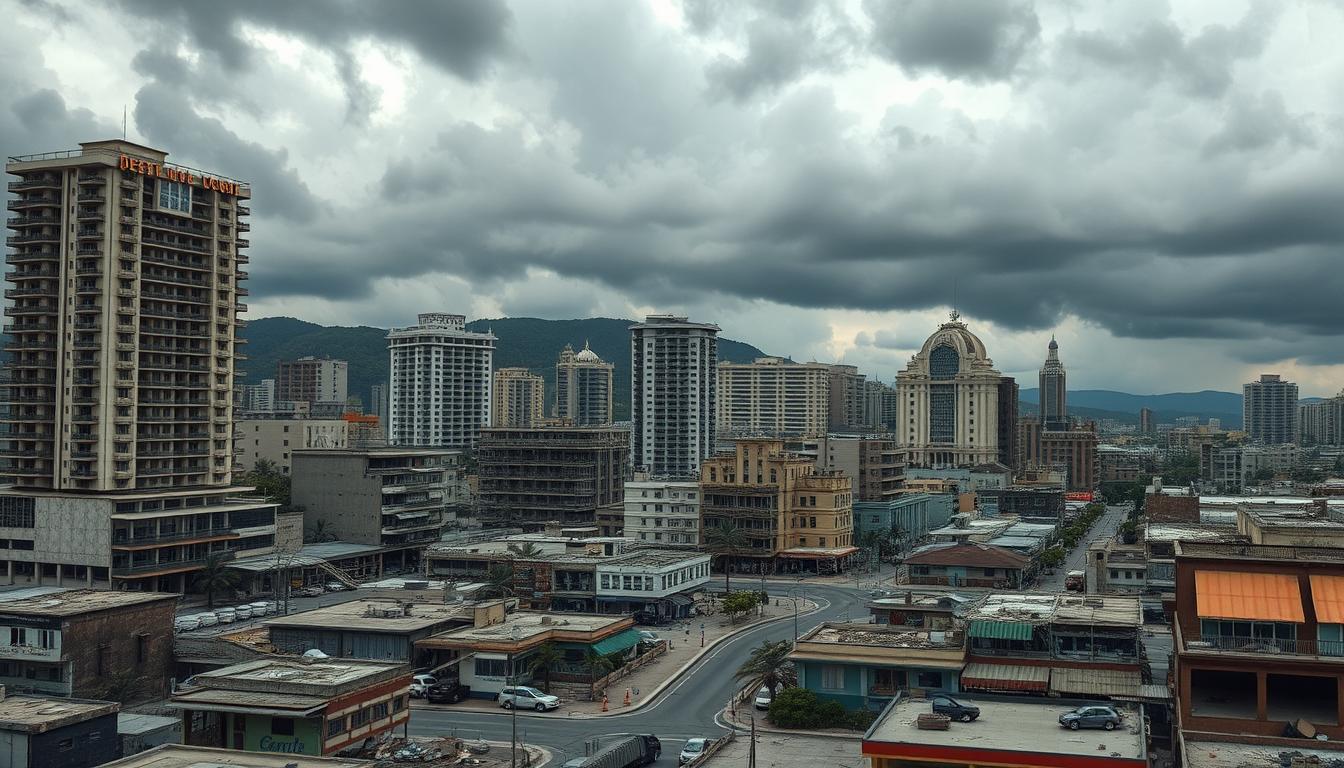In recent decades, a remarkable transformation has taken place in the world of agriculture. A country that once relied heavily on food imports has emerged as one of the world’s leading agricultural exporters.
This transformation is not just significant for the world’s food production; it represents a major shift in the global agribusiness market. With its vast land and strategic market development, Brazil has become a key player in meeting the growing demand for food.
Key Takeaways
- The transformation of Brazil’s agricultural sector is a significant economic achievement.
- Innovative research and policy reforms played a crucial role in this success.
- Brazil’s experience offers valuable lessons for other countries.
- The country’s agricultural growth has contributed to global food security.
- Strategic market development was key to Brazil’s emergence as a global export power.
Brazil’s Agricultural Transformation: From Food Importer to Global Powerhouse
From food scarcity to global food leadership, Brazil’s agricultural journey is inspiring. Until the mid-1980s, Brazil was a net importer of food, relying on foreign aid to meet its domestic demand. However, the landscape changed dramatically as the country’s population grew and urbanized, necessitating the modernization of its agricultural sector.
Historical Context: Brazil as a Food Importer Until the 1980s
In the past, Brazil’s agricultural production was insufficient to feed its growing population. Between the 1960s and 1980s, the need to modernize agriculture became pressing. The country faced significant challenges in ensuring a stable food supply, often requiring foreign assistance.
The Scale of Brazil’s Agricultural Success Today
Today, Brazil is a global powerhouse in agriculture. The value of its agricultural output, including crops and livestock, has grown at an average annual rate of 8% over the past two decades. Brazilian agribusiness now represents about 25% of the country’s GDP and more than half of its exports.
| Indicator | Pre-1980s | Current Status |
|---|---|---|
| Food Import Status | Net Importer | Major Exporter |
| Agricultural GDP Contribution | Less significant | Approximately 25% |
| Export Markets | Limited | Exports to 222 countries |
As noted by experts, “Brazil’s transformation into an agricultural giant is a testament to its innovative spirit and strategic investments in agricultural technology.”
The country’s agricultural success story is characterized by its ability to become a top producer of various commodities and a leading exporter of agricultural products. This transformation has positioned Brazil as a critical player in the global market, meeting the demand of countries worldwide.
The Natural Advantages: Brazil’s Geographic and Climate Assets
Brazil’s vast and diverse natural resources have been instrumental in its transformation into an agricultural giant. The country’s geographic and climate assets have played a crucial role in its emergence as a global agricultural powerhouse.
Abundant Land Resources and Favorable Climate
Brazil is the world’s fifth-largest country by geographical area and the largest in terms of arable land, boasting more than 410 million hectares of potential arable land. Currently, it uses about 63.5 million hectares for crop production, indicating significant room for expansion. The diverse climate zones across Brazil allow for the production of a wide variety of crops throughout the year, creating extended growing seasons that are not possible in most other agricultural regions.
Multiple Harvests: Brazil’s Unique Agricultural Advantage
One of Brazil’s most distinctive advantages is its ability to harvest two to three crops annually on the same plot of land. This capability significantly boosts productivity compared to countries with temperate climates where such multiple harvests are not feasible. The combination of favorable climate conditions, abundant land, and substantial water resources creates a natural foundation for agricultural production that is unmatched by few other countries.
The country’s agricultural potential is further enhanced by its abundant water resources, with approximately 12% of the world’s freshwater reserves supporting irrigation systems and livestock production. This unique combination of natural advantages positions Brazil as a leader in global food production, with the capacity to sustainably expand its agriculture and continue to meet the world’s growing demand for food and soybeans.
The Research Revolution: Embrapa and Agricultural Innovation
Embrapa’s pioneering work in agricultural research has enabled Brazil to become a global powerhouse in agricultural production.
The establishment of Embrapa in the 1970s was a pivotal moment in Brazil’s agricultural history, as it created a world-class research institution dedicated to addressing the unique challenges of tropical agriculture.
Development of Tropical Agriculture Technology
Embrapa’s groundbreaking work in “tropicalizing” crops involved developing new seed varieties and technological packages specifically adapted to Brazil’s soil and climate conditions, particularly in the previously “unusable” Cerrado region. This research focused on overcoming the natural limitations of tropical soils, which typically have high acidity and aluminum toxicity that had previously made large-scale agriculture difficult.
Scientists developed innovative farming techniques, including soil correction methods, biological nitrogen fixation, and no-till farming systems, that dramatically increased productivity while reducing environmental impact.
Adaptation of Crops to Brazil’s Soil and Climate Conditions
The adaptation of soybeans to tropical conditions stands as one of the greatest agricultural research achievements, transforming a crop previously limited to temperate regions into Brazil’s agricultural flagship. This achievement demonstrates how targeted agricultural research can transform food production systems and overcome seemingly insurmountable natural limitations.
Productivity Gains Through Research and Development
Productivity gains through research and development have been so significant that studies indicate Brazil would have needed an additional 366 million hectares to achieve current production levels without these innovations. Embrapa’s success demonstrates how targeted agricultural research can transform food production systems, making Brazilian agribusiness products globally competitive and encouraging the growth of Brazilian exports.
The research revolution led by Embrapa has been instrumental in making Brazil a leader in agricultural production, with a strong emphasis on technology and research. As a result, Brazil has become a major player in the global agricultural market, with a significant impact on the economy and the environment.
Policy Changes That Fueled Agricultural Growth
A series of economic reforms and policy changes starting in the mid-1980s played a crucial role in stimulating Brazil’s agricultural growth. Prior to these reforms, government policies had channeled resources away from agriculture into industrial development, hindering the sector’s growth and competitiveness.
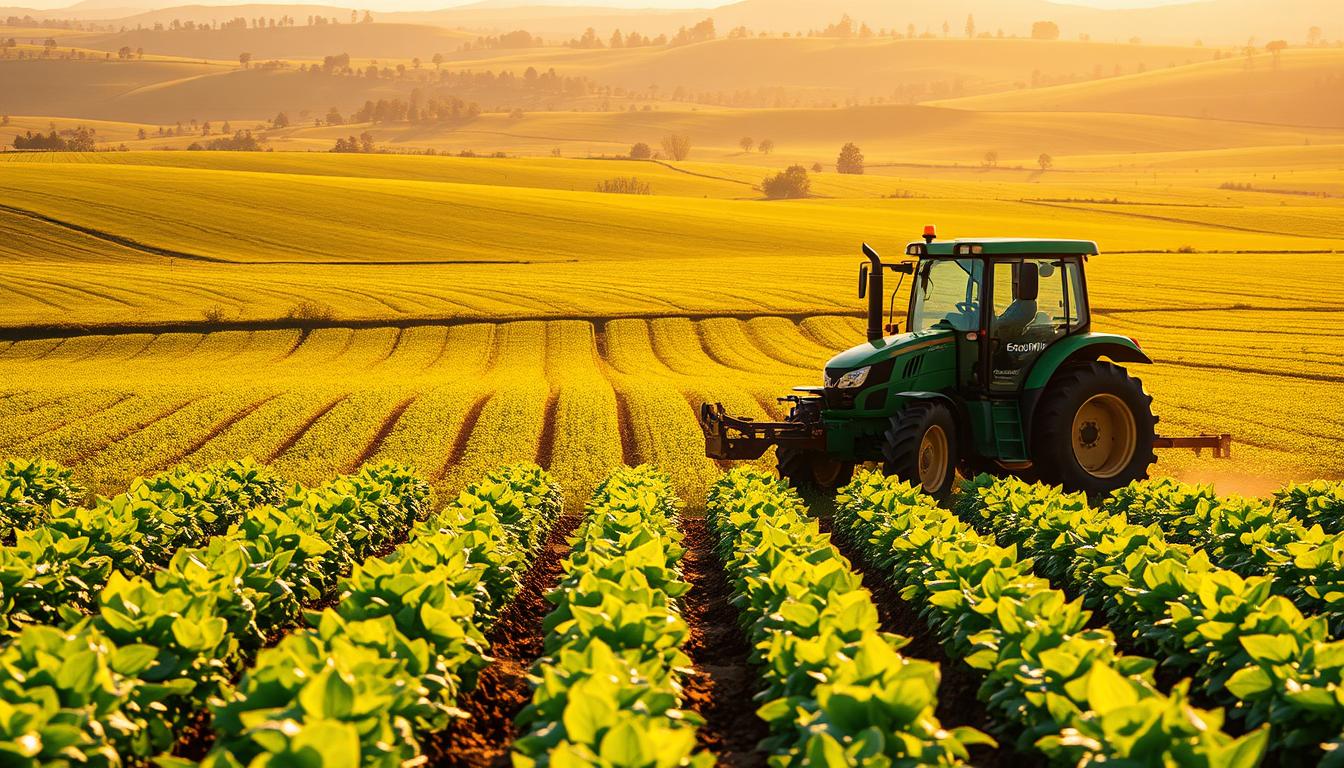
Economic Reforms and Currency Stabilization
The implementation of the “Real Plan” in 1994 was a significant economic reform that stabilized Brazil’s currency after years of hyperinflation. This monetary plan brought inflation under control, creating a more stable environment for agricultural production and trade.
Elimination of Export Restrictions and Taxes
The elimination of domestic and export taxes, along with the removal of restrictions on exports of key commodities like soybeans, cotton, and meat, created new incentives for agricultural production and exports. This change encouraged farmers to increase production, knowing they could sell their products in the global market.
Reduced Government Intervention in Agricultural Markets
The government reduced its intervention in agricultural markets by privatizing state enterprises, eliminating minimum support prices for commodities, and dismantling marketing boards for coffee, sugar, and wheat. These market-oriented reforms created a more competitive environment, rewarding efficiency and innovation throughout the agricultural sector.
The combination of macroeconomic stability and agricultural policy reforms created a favorable investment climate, attracting both domestic and international capital to Brazil’s agricultural frontier. As a result, Brazil’s agribusiness sector experienced rapid growth, making it a major player in the world food market. The agricultural sector became a key driver of the country’s economy, contributing to its overall growth and development.
How Brazil Overcame Agricultural Challenges to Become a Global Export Power
Through determination and innovation, Brazil successfully addressed its agricultural challenges to emerge as a global export leader. The country’s journey involved transforming vast tracts of previously unproductive land into highly productive agricultural regions.
Conquering the Cerrado
The transformation of the Cerrado region was a pivotal moment in Brazil’s agricultural success story. Covering approximately 25% of Brazil’s land area, this vast savannah was once considered unsuitable for large-scale agriculture due to its acidic, nutrient-poor soils. However, through a combination of scientific innovation, policy support, and the pioneering efforts of farmers, the Cerrado was transformed into a thriving agricultural hub.
The process involved government programs that encouraged farmers from the southern states to migrate northward, bringing their expertise to develop new production areas. As a result, the Cerrado became a key region for soybean production, among other crops, significantly contributing to Brazil’s agricultural output and exports.
Developing Infrastructure in Remote Regions
The development of infrastructure in remote regions was crucial for Brazil’s agricultural expansion. Although still a work in progress, improvements in transportation networks enabled the efficient movement of inputs to farms and agricultural products to processing facilities and export terminals. This infrastructure development played a vital role in reducing costs and enhancing the competitiveness of Brazilian agricultural products in the global market.
Building Global Market Competitiveness
Brazil built its global market competitiveness through a combination of low production costs, large-scale operations, and consistent quality improvements. The country also diversified its export markets, reducing dependence on traditional trading partners and developing strong commercial relationships with emerging economies, particularly China. As a result, Brazil’s agricultural sector became more resilient and competitive in the world market.
“Brazil’s success in overcoming agricultural challenges demonstrates how coordinated efforts across research, policy, infrastructure, and market development can transform seemingly insurmountable obstacles into competitive advantages.”
The country’s experience offers valuable lessons for other nations facing similar agricultural challenges, highlighting the importance of innovation, policy support, and strategic investment in infrastructure and market development.
Brazil’s Agricultural Export Profile
Brazil’s agricultural sector has undergone a significant transformation, emerging as a global powerhouse in the production and export of various commodities. This shift is largely attributed to the country’s ability to adapt and innovate, meeting the growing global demand for food and agricultural products.
Key Export Products: Soybeans, Meat, Sugar, and Beyond
Brazil’s agricultural export profile has diversified significantly, with soybeans standing out as a flagship product. The country now supplies more than 50% of the world’s soybean trade, produced on just 17% of its arable land. Additionally, Brazil has become the world’s largest exporter of beef and chicken, offering competitively priced protein to global markets. Other key export products include sugar, corn, cotton, and ethanol, contributing to the country’s status as a major agricultural exporter.
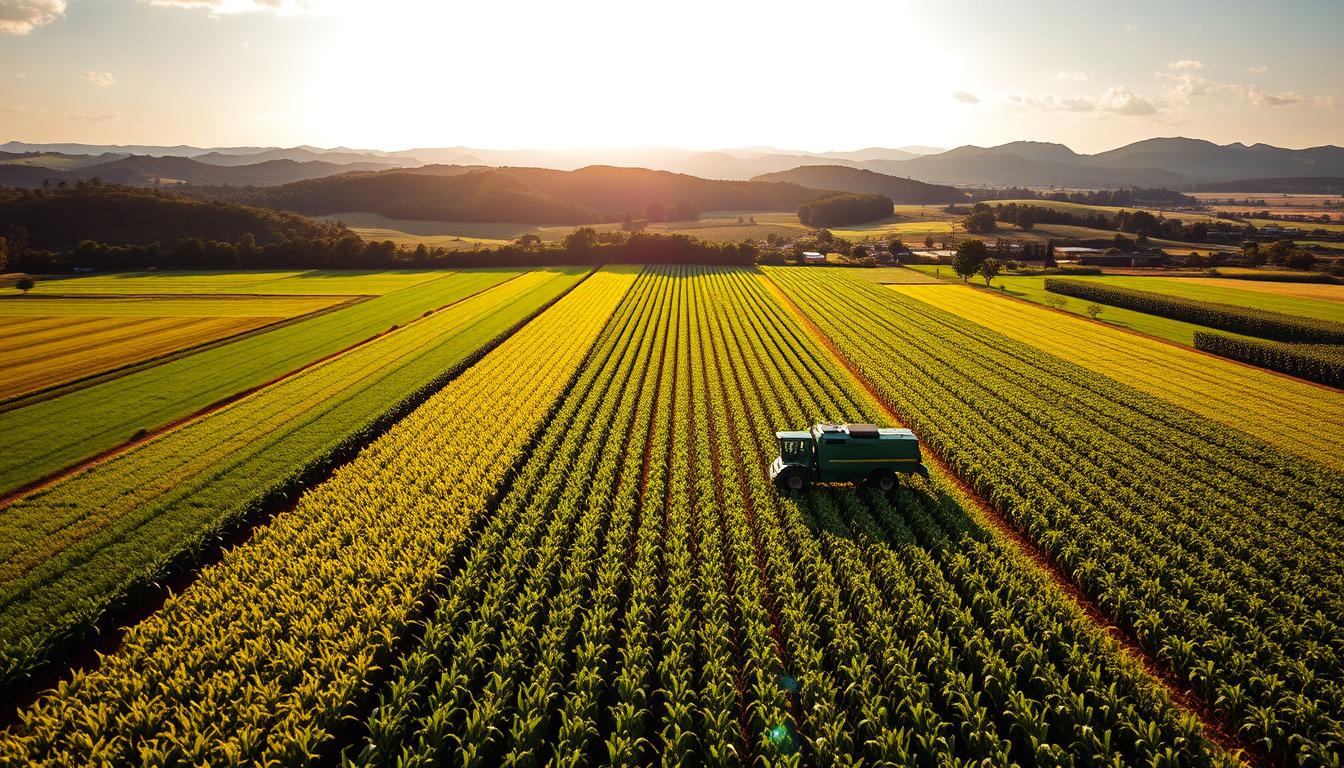
Diversification of Export Markets
Brazil has strategically diversified its export destinations, now shipping agricultural products to 222 countries and territories. This broad market reach has been crucial in establishing the country’s presence in the global agricultural trade. The diversification has also helped in mitigating risks associated with dependence on a single market.
China’s Growing Importance as a Trading Partner
The China-Brazil agricultural trade relationship has become particularly significant, with China accounting for 39% of Brazil’s total agricultural exports and 70% of its soybean exports in 2021. Soaring demand from China has been a key driver of Brazil’s export growth, underscoring the importance of this trade partnership in the country’s agricultural sector.
The value of Brazil’s agricultural exports has grown at an impressive average of 9.4% annually from 2000 to 2021, with agricultural products now representing 37% of the country’s total exports. This growth highlights Brazil’s emergence as a leading player in the global agricultural market.
The Economic Impact of Brazil’s Agricultural Success
Brazil’s rise as an agricultural powerhouse has significantly influenced its economic landscape. The country’s agricultural sector has not only become a major contributor to its GDP but has also played a crucial role in employment, regional development, and foreign exchange earnings.
Contribution to GDP and Employment
The agricultural sector is a significant contributor to Brazil’s economy. In 2021, crop and livestock production accounted for 8% of the country’s Gross Domestic Product (GDP). When including activities such as processing and distribution, the agriculture and food sector represented nearly 29% of Brazil’s $1.8 trillion economy. Moreover, agriculture employs 15.1 million people in rural establishments, equivalent to about 15% of Brazil’s total labor force.
| Economic Indicator | Percentage Contribution |
|---|---|
| GDP from Crop and Livestock Production | 8% |
| GDP from Agriculture and Food Sector | 29% |
| Labor Force in Agriculture | 15% |
Regional Development and Wealth Distribution
The growth of the agricultural sector has driven regional development, particularly in previously underdeveloped regions like the Cerrado. This development has created new economic opportunities and reduced regional inequality. As a result, the agricultural sector has become a vital component of Brazil’s economic strategy, promoting balanced regional growth and improving living standards.
“The agricultural development model in Brazil demonstrates how a resource-rich country can leverage its comparative advantages to create broad-based economic growth and improve living standards.”
Foreign Exchange Earnings and Trade Balance
Agricultural exports have become crucial to Brazil’s trade balance, accounting for more than half of the country’s total exports. The sector generates essential foreign exchange earnings that support macroeconomic stability. The success in agricultural production and exports has positioned Brazil as a significant player in the global food market, meeting the demand from countries around the world.

The multiplier effect of agricultural success has stimulated growth in related industries, including agricultural machinery, food processing, transportation, and financial services. This has further contributed to the country’s economic development, creating a robust and diversified economy.
Current Challenges Threatening Future Growth
Brazil has made significant strides in becoming a global agricultural leader, but its future growth is threatened by several challenges. Despite its remarkable success, Brazil’s agricultural sector faces significant challenges that threaten to constrain future growth and competitiveness in global markets.
Logistics and Infrastructure Challenges
Infrastructure and logistics bottlenecks represent a pressing challenge, with inadequate storage facilities, ports, roads, and railways creating inefficiencies that increase costs and reduce competitiveness. The development of storage facilities, ports, roads, and railways has not kept pace with Brazil’s growth in agricultural production and exports. In recent years, the volume of soybeans and corn for export and of imported fertilizers has overwhelmed loading docks at Brazilian ports, resulting in delays and additional costs.
Environmental Pressures
Environmental concerns and deforestation pressures have intensified, creating tensions between agricultural expansion and conservation priorities, particularly in sensitive biomes like the Amazon and Cerrado. The land used for agricultural practices is under scrutiny, and there is a growing need for sustainable land use practices.
Fertilizer Dependency
Brazil’s heavy dependence on imported fertilizers represents a strategic vulnerability, with approximately 85% of fertilizers being imported, making farmers highly susceptible to global price fluctuations and supply disruptions. In 2021, Brazil’s fertilizer use accounted for 17.3 percent of total world fertilizer consumption.
Credit and Financial Constraints
Credit limitations and financial constraints affect many producers, with high interest rates and the current high rate of indebtedness of crop and livestock producers limiting access to capital needed for continued investment and innovation. This limits the ability of farmers to invest in their land and production processes.
Innovative Solutions for Sustainable Growth
As the world’s food production landscape evolves, Brazil stands out for its innovative agricultural practices. The country has made significant strides in enhancing productivity while minimizing environmental impacts.
The introduction of integrated crop-livestock-forestry systems has been a game-changer. These systems combine crop production, livestock raising, and forestry on the same area, promoting land-use efficiency, improving soil health, and reducing the pressure for deforestation.
Integrated Crop-Livestock-Forestry Systems
Integrated Crop-Livestock-Forestry (ILPF) systems represent one of Brazil’s most promising sustainable agricultural innovations. By integrating different production systems, ILPF enhances productivity and reduces environmental impacts.
These systems have been shown to increase land-use efficiency, improve soil health, and diversify farm income. Moreover, they help sequester carbon, contributing to a more sustainable agricultural practice.
Technology Adoption and Precision Agriculture
Precision agriculture technology has been rapidly adopted in Brazil, with GPS-guided machinery and drone monitoring optimizing input use and reducing costs. This technology has minimized environmental impacts while enhancing productivity.
Brazil’s Agricultural Research Corporation (Embrapa) continues to develop climate-resilient crop varieties and farming practices, enabling farmers to withstand changing weather patterns and extreme events.
Sustainable Land Use and Environmental Compliance
Brazil’s efforts to promote sustainable land use are also reflected in its Forest Code and environmental compliance mechanisms. These frameworks balance food production with conservation priorities, ensuring that agricultural expansion does not come at the expense of the environment.
Studies have shown that Brazil’s productivity gains have resulted in significant “land-saving” effects, with estimates suggesting that an additional 366 million hectares would have been needed to achieve current production levels without these innovations.
Brazil’s Future as an Agricultural Superpower
As the global demand for sustainably produced food rises, Brazil is well-positioned to lead the way in the agricultural sector. With the USDA projecting that Brazil will add approximately 20 million hectares of cropland by 2031, representing one of the world’s fastest rates of agricultural expansion at 2.6% annually, the country’s future as an agricultural superpower looks bright.
To meet growing global demand, particularly from China and other Asian markets, Brazil will need to increase production of grain by 76% and oilseed by 41% by 2031 compared to 2021 levels. The livestock sector is also projected to grow substantially, with meat and poultry production forecast to increase from 61 million tons in 2021 to 70 million tons by 2031.
Brazil’s future agricultural success will depend on its ability to address current challenges while continuing to innovate in areas like sustainable intensification, precision farming, and climate-smart agriculture. The country’s agricultural research institutions will play a crucial role in developing new technologies and practices that increase productivity while reducing environmental impacts.
By continuing to innovate and improve farming practices, Brazil can not only meet the growing global demand for food but also contribute significantly to global food security in an era of climate change and resource constraints.
FAQ
▶
▶
▶
▶
▶
▶
▶
